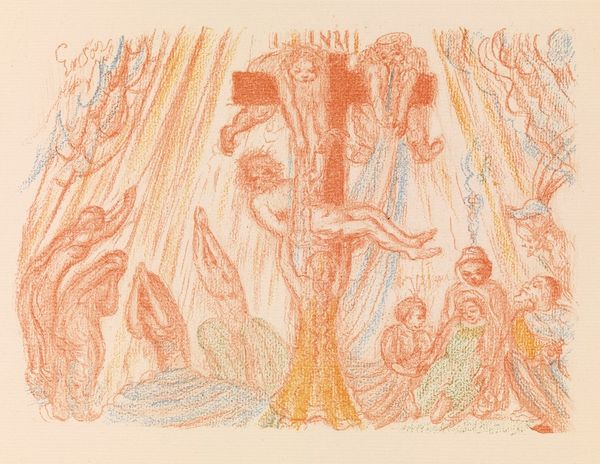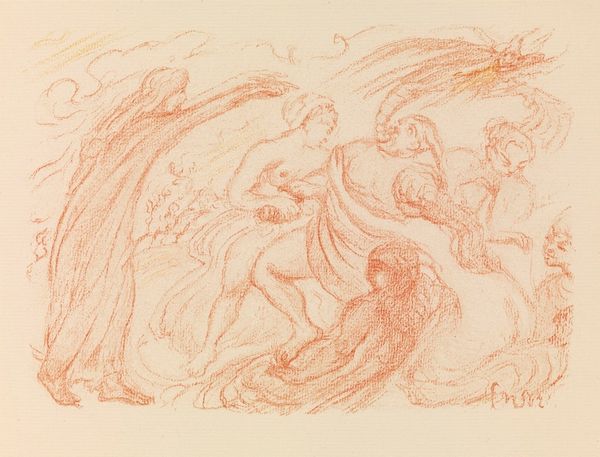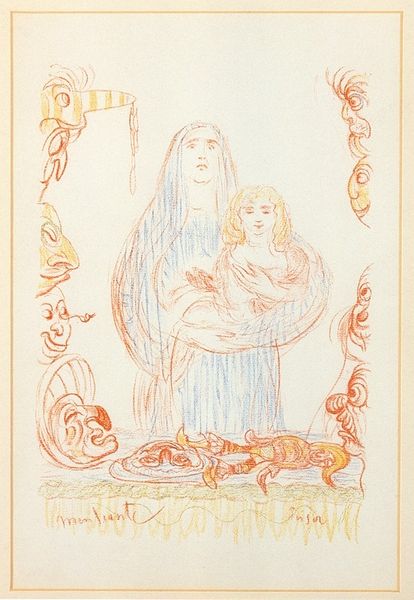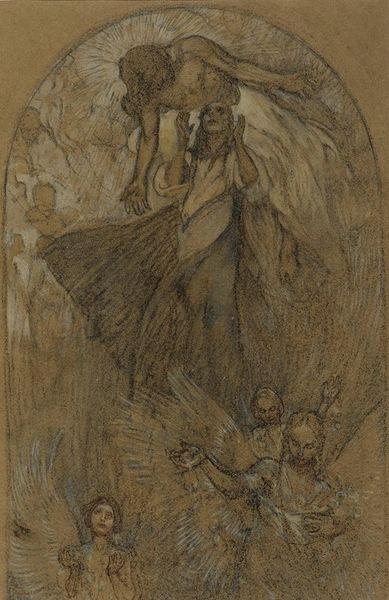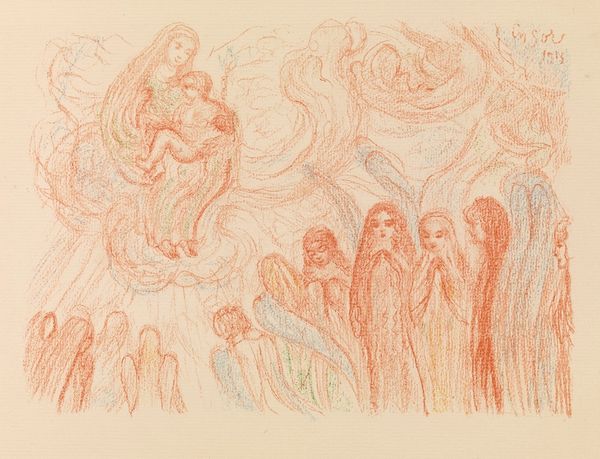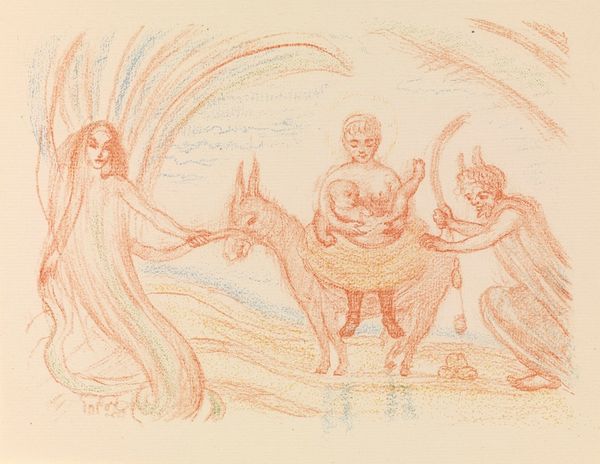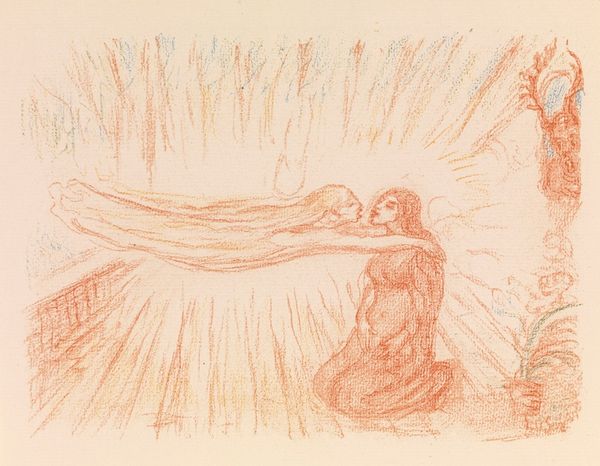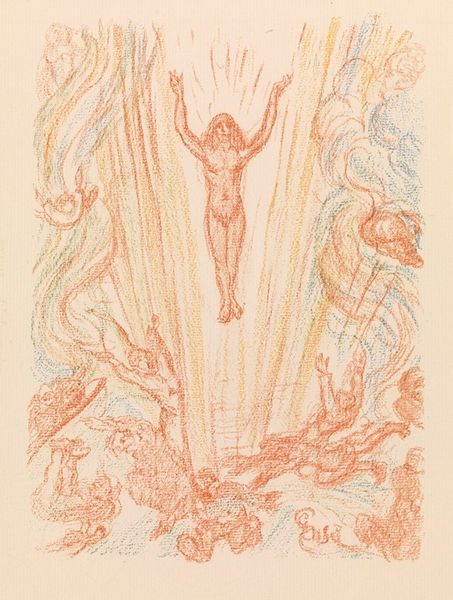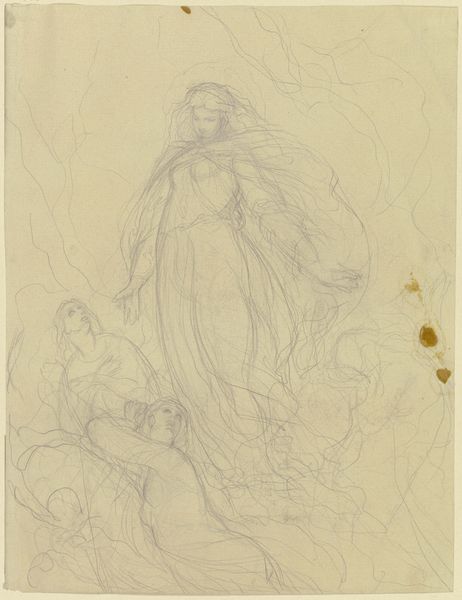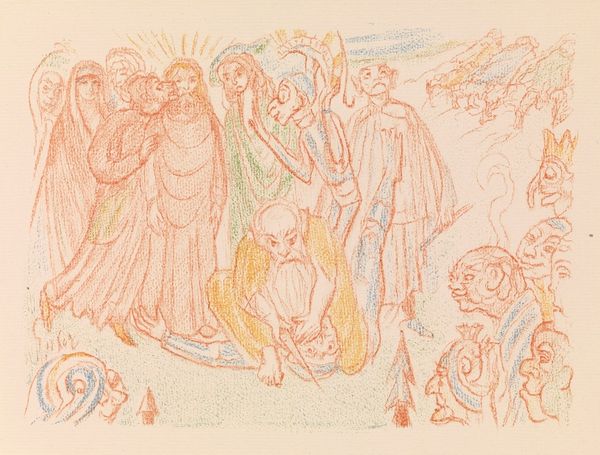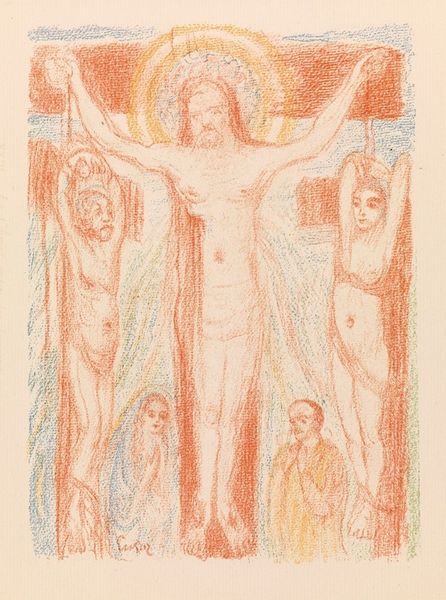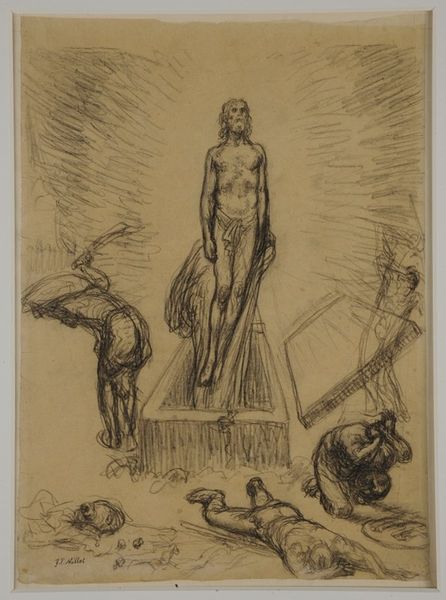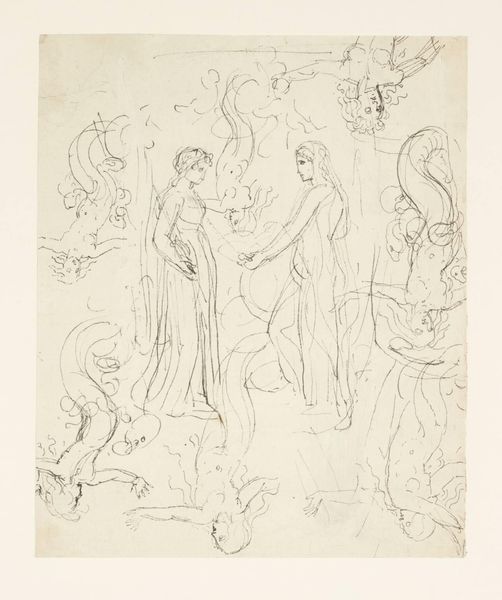
Copyright: Public Domain: Artvee
Curator: Well, this is dreamlike. Ensor's "The Assumption of Mary," created in 1921 with colored pencils, feels like a fading memory, doesn’t it? Editor: It certainly does. It has a ghostlike quality. A pastel world. Knowing Ensor’s fascination with masks and social commentary, it's difficult for me not to see the political implications. How might this ascension relate to female empowerment in the aftermath of the first World War? Curator: Fascinating. Perhaps. I am immediately struck by Mary herself. The halo of light around her feels significant, an echo of the divine feminine found across many cultures, she radiates an ethereal, otherworldly beauty, a timeless figure rising above worldly concerns. Editor: The nude, but sexless representation of her ascending speaks volumes. During this period women's bodies were constantly policed and hyper-sexualized. Presenting the Virgin Mary like this… it's a visual assertion of her autonomy. And what about the chorus of onlookers? Are they celebratory, or accusatory? Curator: The composition is layered with meaning, a traditional subject rendered in an untraditional, almost frenzied way. There are layers of witnesses and angels framing her rise, their presence underscoring her transformation but I do not believe them to be accusatory at all. The radiant colours speak of joy. Editor: Still, I see echoes of earlier misogyny in their ambiguous expressions. As a subject matter of Mary’s Assumption… the idea of a woman being elevated to divine status, especially during an era defined by patriarchal structures is complex. Was it about actual belief, or about controlling the narrative? Ensor seems to sit at the intersection between tradition and transgression. Curator: Ultimately, I see this work as a profound exploration of faith, not only in a religious sense but faith in the ability of humanity to rise above earthly constraints. Editor: And for me, it prompts me to look at how art, and artists like Ensor, can provide critical lenses through which we examine entrenched power structures and narratives. Curator: I shall not easily forget the feeling that Mary inspires as she ascends to the Heavens in a swirl of light. Editor: Or the social narratives we carry, even unconsciously, into how we see an image of purity and ascension.
Comments
No comments
Be the first to comment and join the conversation on the ultimate creative platform.

